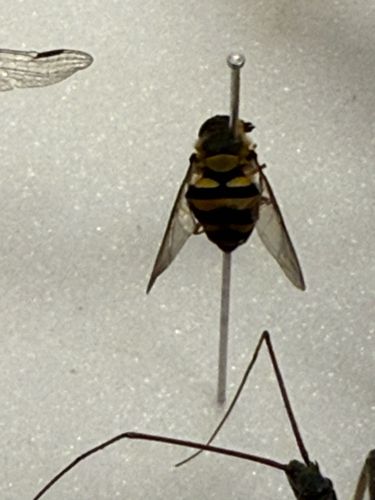Hoverfly, also known as Flower Fly or Syrphid Fly
Scientific Name: Syrphidae (family)
Order & Family: Order: Diptera, Family: Syrphidae
Size: Typically 4 to 25 mm (0.16 to 1 inch) in length, with many common species being 8-15 mm.

Natural Habitat
Found in a wide range of habitats, particularly those with flowering plants, such as gardens, meadows, woodlands, and urban areas. Larvae can be found in diverse locations depending on species, including on plants feeding on aphids, in decaying organic matter, or in aquatic environments.
Diet & Feeding
Adult hoverflies primarily feed on nectar and pollen from flowers. The larvae have varied diets; many species are predatory, feeding on soft-bodied insects like aphids, while others are saprophagous (feeding on decaying organic matter) or mycophagous (feeding on fungi).
Behavior Patterns
Adults are excellent mimics of bees and wasps, displaying Batesian mimicry to deter predators. They are known for their characteristic hovering flight patterns. They are active during the day, especially in sunny conditions. Larval behavior varies significantly by species due to their diverse diets.
Risks & Benefits
Hoverflies pose virtually no risks to humans as they do not sting or bite. They are highly beneficial insects, serving as important pollinators for many plants, including agricultural crops. Their predatory larvae are significant biological control agents, helping to reduce populations of pests like aphids, which benefits agriculture and gardening.
Identified on: 9/25/2025